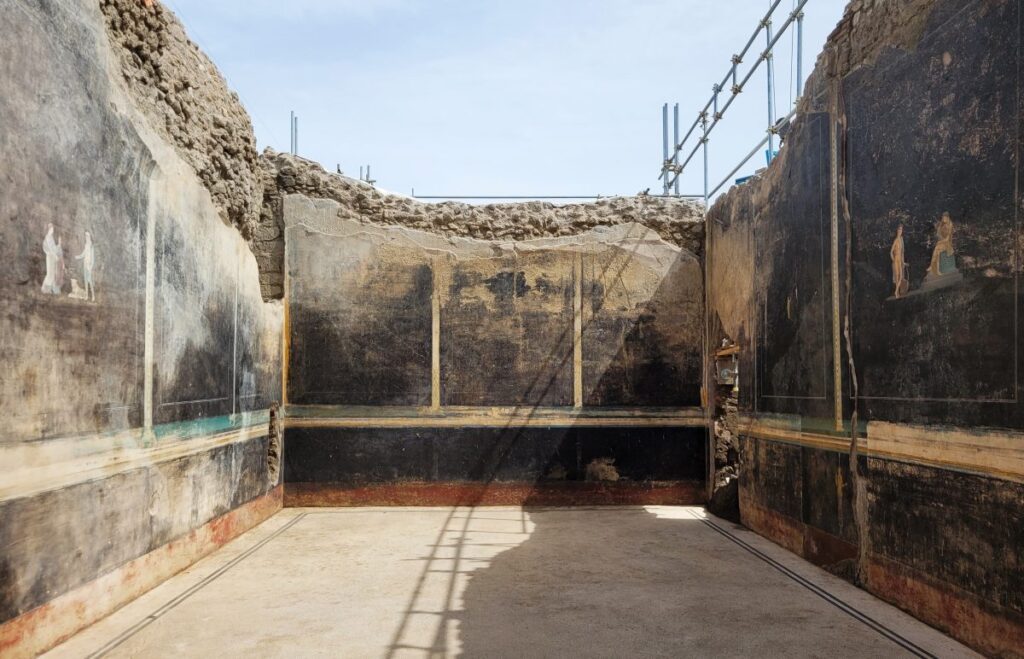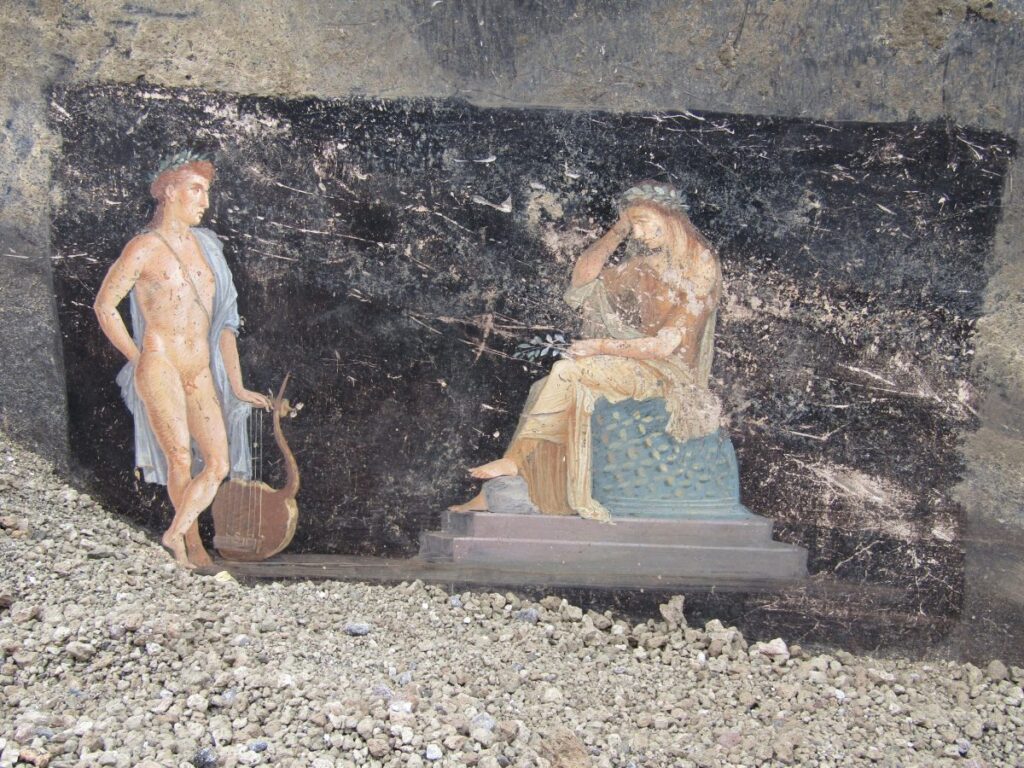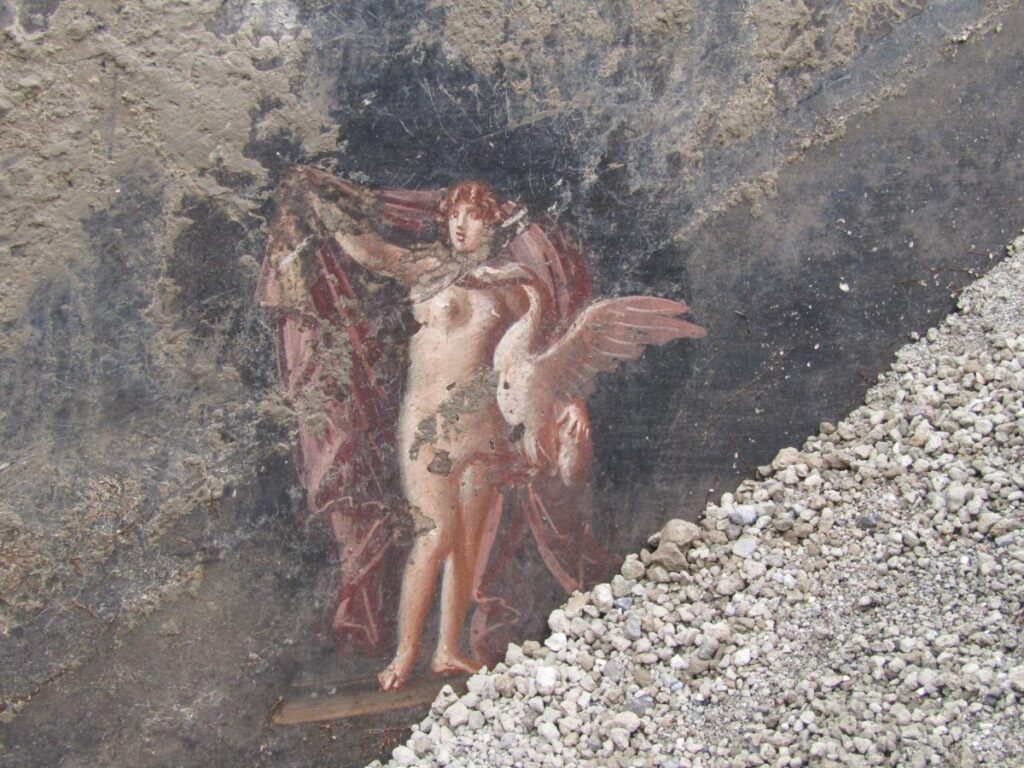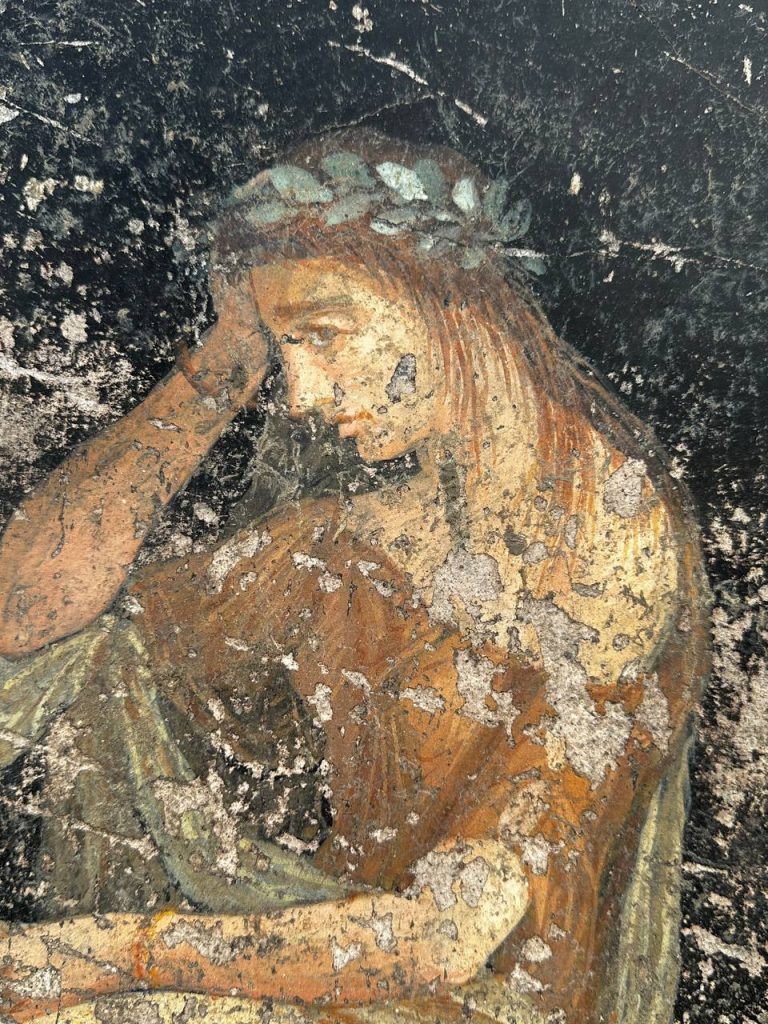Turner at 250: The Best Anniversary Exhibitions
The year 2025 marks the 250th anniversary of the birth of Joseph Mallord William Turner, arguably Britain’s greatest landscape painter.
Catriona Miller 13 February 2025
Archeologists have discovered a spectacular banquet hall decorated with frescoes depicting mythological characters during the excavations currently underway in Pompeii’s Regio IX. Among the scenes depicted are Apollo’s seduction of Cassandra and Helen of Troy meeting Prince Paris, the archeological park recently announced.
The eruption of Mount Vesuvius in 79 CE buried the city of Pompeii under a blanket of ash. Since the site’s discovery in the 16th century, and subsequent excavation in the 18th century, stunning frescoes that once graced the city’s lavish interiors have periodically come to light, offering a glimpse of the lives of the ancient Romans.

The “Black Room” with walls adorned by the frescoes, 15BCE-50CE, Archeological Park of Pompeii, Pompeii, Italy.
The latest treasures to emerge from the ancient city include a dining room, a bakery, and a laundry facility, which archaeologists believe were all owned by the same individual. A largely intact mosaic floor, featuring more than a million individual tiles, was also unearthed during the recent excavation. The frescoes and mosaics, painted in what is known as the Third Style, provided an elegant setting for what was once a banquet hall. Dubbed the “Black Room,” the hall was once used as an entertainment space for gatherings.
“The walls were painted black to prevent the smoke from the oil lamps being seen on the walls,” explained Gabriel Zuchtriegel, the Director of the Archaeological Park of Pompeii.
People would meet to dine after sunset; the flickering light of the lamps had the effect of making the images appear to move, especially after a few glasses of good Campanian wine.
Director,
Archaeological Park of Pompeii

A fresco depicting Apollo and Trojan Priestess Cassandra, 15BCE-50CE, Archeological Park of Pompeii, Pompeii, Italy.
Images of this sort were common in Roman houses as they would offer talking points for guests in dining rooms and living rooms. The fil rouge that appears to weave through the various depictions is the theme of heroism, as well as that of fate.
“The mythological couples provided ideas for conversations about the past and life, only seemingly of a merely romantic nature. In reality, they refer to the relationship between the individual and fate: Cassandra who can see the future but no one believes her, Apollo who sides with the Trojans against the Greek invaders, but being a god, cannot ensure victory, Helen and Paris who, despite their politically incorrect love affair, are the cause of the war, or perhaps merely a pretext,” Zuchtriegel said.
“Who knows? These days, Helen and Paris represent us all: each day we can choose whether to focus solely on our own private lives or whether to explore the way our lives are entangled with the broad sweep of history, thinking for example, not just of war and politics, or of the environment, but also of the atmosphere we are creating in our society, communicating with others in real time and on social networks,” he added.

A fresco depicting Zeus and the queen Leda, 15BCE-50CE, Archeological Park of Pompeii, Pompeii, Italy.
The newly excavated frescoes have been enclosed by temporary roofing and scaffolding. Restorers have injected plaster glue to ensure the artworks remain unscathed. The room, which is roughly 49 feet long and 20 feet wide, opens into a courtyard with a long staircase ascending to the first floor. It is one of some 13,000 rooms across 1,070 residential units that comprise the UNESCO World Heritage site.
According to an official statement, the excavation of Regio IX is part of a larger project designed to support the front of the perimeter between the excavated and unexcavated areas, as well as to fortify the hydrogeological structure, with the objective of making the vast heritage of Pompeii more efficient and sustainable.
“Pompeii is truly a treasure chest that never ceases to surprise us and arouse amazement,” said the Minister of Culture, Gennaro Sangiuliano. “Every time we dig, we find something beautiful and significant.”

A fresco depicting Trojan priestess Cassandra, 15BCE-50CE, Archeological Park of Pompeii, Pompeii, Italy.
DailyArt Magazine needs your support. Every contribution, however big or small, is very valuable for our future. Thanks to it, we will be able to sustain and grow the Magazine. Thank you for your help!